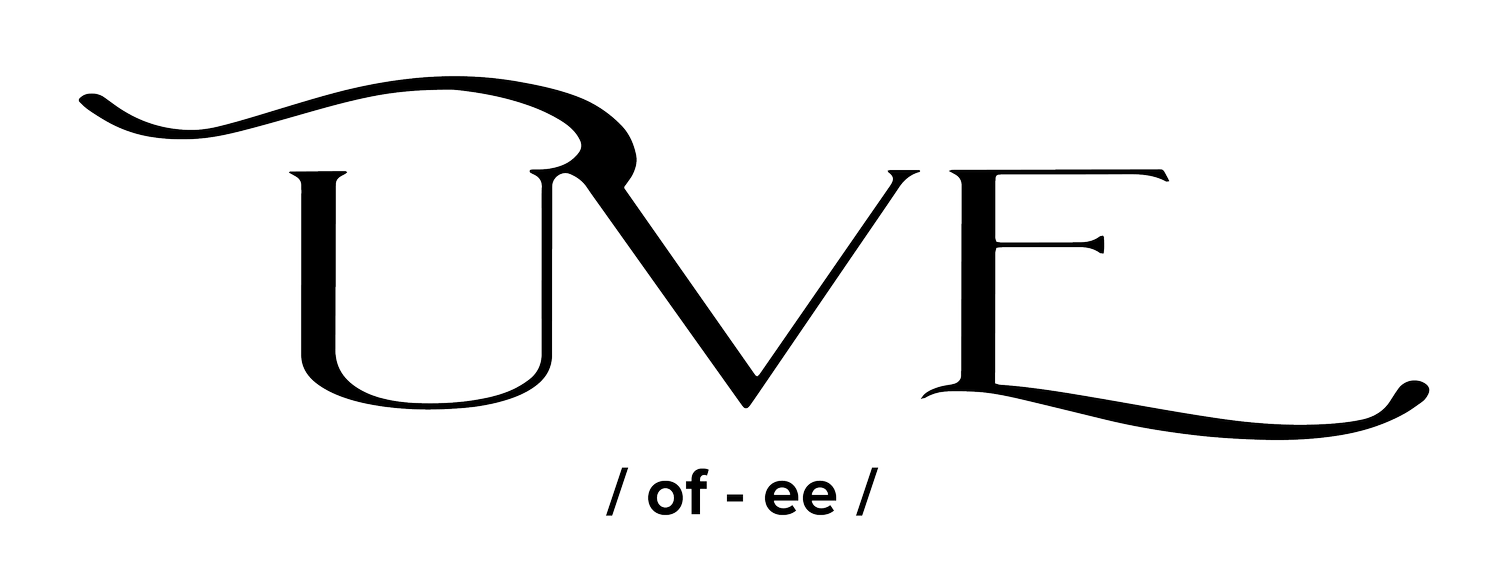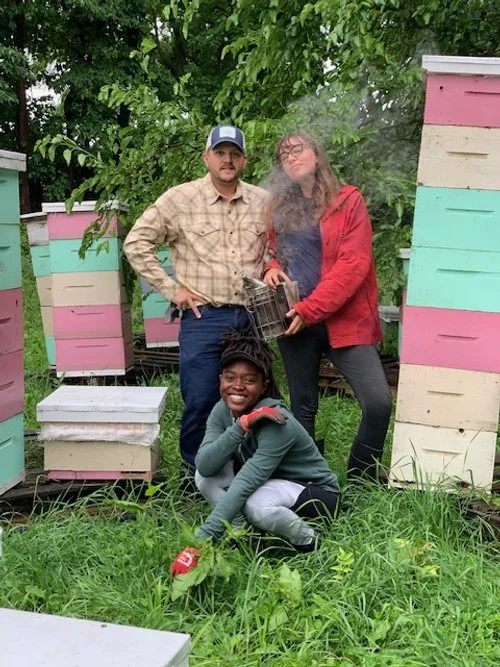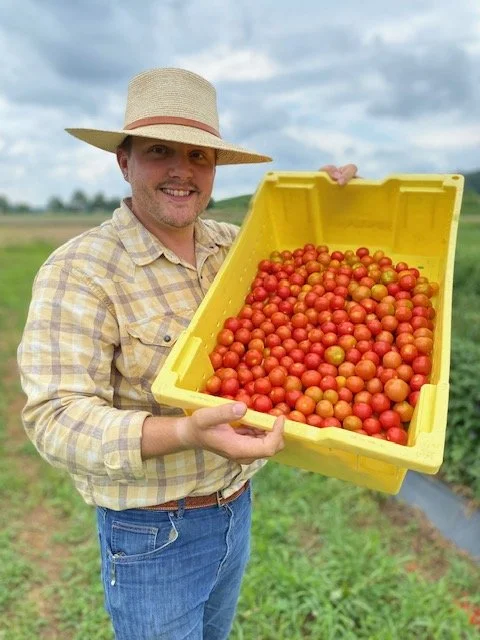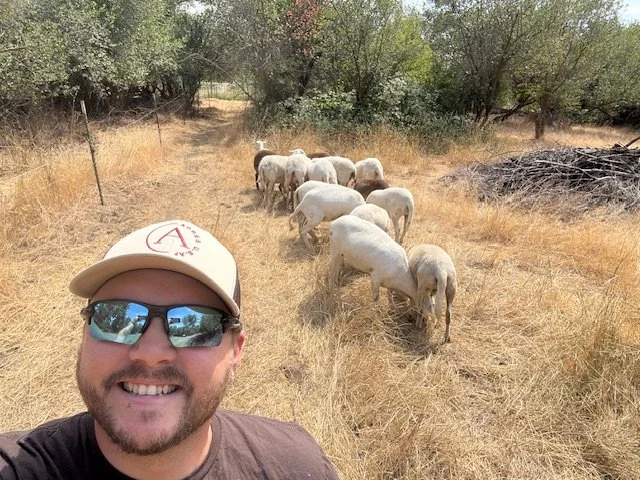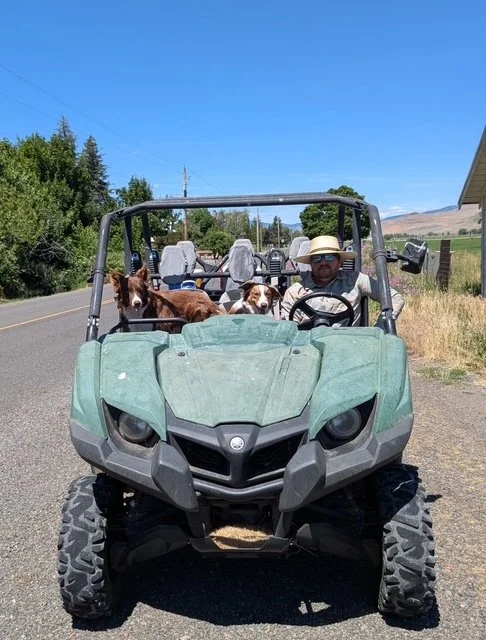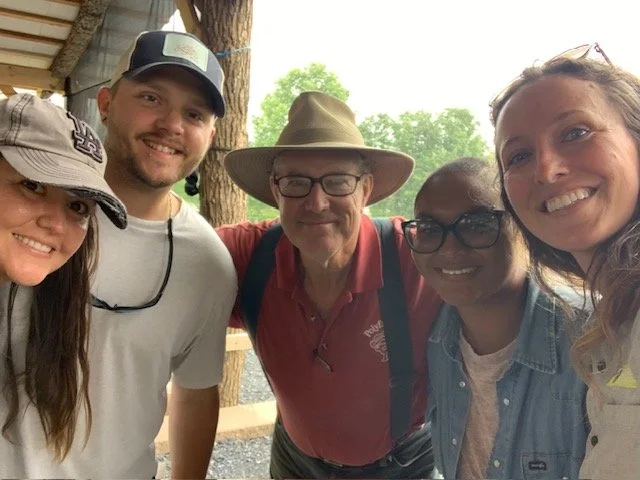When the Season Slows: Holding Soil and Holding Community
By West Lambert
As summer turns to fall, I find myself in that familiar transition between long days in the field and the slower rhythm of winter. This year, that shift feels especially welcome—it’s been a busy stretch of projects that have stretched me in new ways.
At Tiichám Conservation District, our work has centered on soil health, food systems, and water. One of the most exciting steps has been launching a soil health initiative aimed at establishing a baseline for fields across the region. We’ve been field sampling, collating results, and beginning to map out patterns that will help guide future management. Establishing this baseline is critical: it gives us a starting point to measure change over time and, more importantly, a way to track whether our stewardship decisions are truly building resilience for the land and the people who depend on it. Coupled with food system work to increase access to fresh nutrient dense foods, and efforts to ensure water quality, the bigger picture is clear—we’re working toward long-term health at every scale, from soil microbes to community members to the land.
Through Soil Sense Consulting, I’ve had the privilege of working alongside producers across the Columbia Plateau. Much of this work comes down to shifting perspective: moving from “fixing problems” to understanding the system as a whole. What I love most, though, is the chance to quite literally dig in the soil together. Kneeling down with a producer, crumbling a handful of earth, and talking through what we see right there in that place—it grounds us both in context. It reminds us that management decisions are never abstract; they’re tied to the living system under our feet. Those moments of connection, where practice and process meet, are what fuel lasting change.
Grad school has been another arena of discovery. My research at Washington State University is looking at how livestock and perennial living mulch can be integrated into organic dryland wheat systems. It’s a mouthful, but the heart of it is simple: can we design cropping systems that work with natural processes rather than against them?
On my own land, I’ve had the chance to play. I’ve been testing biological soil amendments, planting cover crop blends, and turning sheep onto those areas to see what kind of changes they spark. There’s something satisfying about watching subtle shifts—more worms in the soil, better infiltration after a rain, a pasture that greens up quicker than before, their preference for one plant over another. These little experiments are reminders of what’s possible at larger scales.
Now, as winter approaches, I’m looking forward to slowing down—digging into the data from this year’s sampling and catching up on reading. Native Science is on my nightstand again, as is Robin Wall Kimmerer’s essay The Serviceberry. Both remind me that this work is about more than crops or soil tests—it’s about weaving people, land, and culture back together.
West Lambert
EOV Monitor | Soil Health Advocate | Soil Sense Consulting
